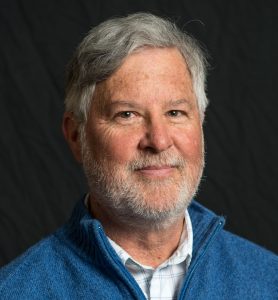
I am a professor in the Department of Computer Science, Colorado State University (CSU), working on machine learning algorithms and deep neural networks for reinforcement learning, brain-computer interfaces and high-dimensional data in general. My interests are in algorithms for classification, modeling, and control problems, the representations learned by them, and what this tells us about the data. Please contact me if you would like to explore the patterns in your data using machine learning methods. Information about our on-line graduate program is available at Degrees Without Borders: Online Programs in Artificial Intelligence.
You may also contact my AI consulting company, Pattern Exploration, whose goal is to develop custom AI solutions to important problems, such as ones related to health, environment, and energy.
I received my Ph.D. in Computer Science from the University of Massachusetts, Amherst in 1986, advised by Andrew Barto. After working for three years at GTE Labs, Waltham, MA, I joined the computer science department at Colorado State University, where I have joint appointments in the Molecular, Cellular, and Integrative Neuroscience Program, the School of Biomedical Engineering, the Graduate Degree Program in Ecology, and the Online Systems Engineering Program.
Contact: chuck.anderson [ at ] colostate.edu
Office: 444 Computer Science Building, Colorado State University
Recent Awards
- 2024, CSU Online Outstanding Distance Educator Award presentation video
- 2015, Best Overall Paper Award at the 2015 International Joint Conference on Neural Networks in Killarney, Ireland. Paper Title: Faster Reinforcement Learning After Pretraining Deep Networks to Predict State Dynamics.
Ph.D. Graduate Students
Current
- Dejan Markovikj – reinforcement learning
- Paras Memon – brain-computer interfaces
- Kartikay Sharma – brain-computer interfaces
Past
- Muhammad Hamdan M Alsharif 2025: Multi-Stream Deep Learning for Isolated Sign Language Recognition in Videos
- Jason Stock 2024: From Neuro–Inspired Attention Methods to Generative Diffusion: Applications to Weather and Climate
- Fereydoon Vafaei, 2023: Machine Learning and Deep Learning Applications in Neuroimaging for Brain Age Prediction
- Steven Kommrusch, 2022: Machine Learning for Computer Aided Programming: From Stochastic Program Repair to Verifiable Program Equivalence
- David Blondheim, 2021: System Understanding of High Pressure Die Casting Process and Data with Machine Learning Applications
- Elliott Forney, 2019: Convolutional Neural Networks for EEG Signal Classification in Asynchronous Brain-Computer Interfaces
- Saleh Alzahrani 2019: A Comparison of Tri-Polar Concentric Ring Electrodes to Disc Electrodes for Decoding Real and Imaginary Finger Movements
- Ratna Saripalli, 2019: Scalable and Data Efficient Deep Reinforcement Learning Methods for Healthcare Applications
- Daniel Elliott, 2018: The Wisdom of the Crowd: Reliable Deep Reinforcement Learning Through Ensembles of Q-Functions
- Minwoo Lee, 2017: Sparse Bayesian Reinforcement Learning
- Rehab Ashari, 2015: EEG Sybspace Analysis and Classification Using Principal Angles for Brain-Computer Interfaces
- Saud Saleh Alotaibi, 2015: Sentiment Analysis in the Arabic Language Using Machine Learning
- Keith Bush, 2008: An Echo State Model of Non-Markovian Reinforcement Learning
- James Nate Knight, 2008: Stability Analysis of Recurrent Neural Networks with Applications
- David Peterson, 2007: Plasticity in EEG Oscillations Associated wtih Auditory Verbal Learning
- Stewart Crawford, 2003: Machine Learned Boundary Definitions for an Expert’s Tracing Assistant in Image Processing
- R. Matthew Kretchmar, 2000: A Synthesis of Reinforcement Learning and Robust Control Theory